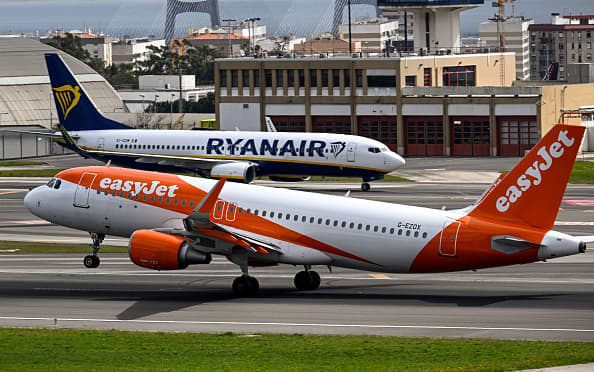Almost a third of global airline capacity is provided by budget airlines such as Spirit and Ryanair. Here's how they operate.

No-frills travel experiences are now a core part of budget airlines' business models.
Since Pacific Southwest Airlines first implemented the low-cost business model in 1949, and perfected it in the early 1970s, the number of carriers has increased worldwide. Today, Southwest's service has evolved to resemble a hybrid between conventional and low-budget airlines, but many other players have emerged in the space. In the U.S., popular low-cost carriers include Frontier Airlines, Spirit Airlines, and Allegiant Air, among others. Budget airlines in Europe include Ryanair, EasyJet, and Wizz Air, while Asia is served by players such as AirAsia and Scoot. Some of South America's low budget airlines include JetSmart, Sky, and Wingo.
Budget carriers may not be as well-known to consumers as airlines become more familiar.
Scott Keyes, founder of Going, explained that while people often assume low-cost carriers offer cheap tickets, the term "low cost" actually refers to the airline's efforts to minimize expenses, resulting in higher profitability.
Budget airlines keep expenses low by offering minimal amenities, such as no internet or seatback entertainment. They attract customers with low base fares, but then charge for additional services like seat selection, food, and luggage, which often result in higher costs than the fare itself. To keep operational costs low, budget airlines prioritize maximizing time in the air and passenger volume.
According to Savanthi Syth, a managing director at Raymond James who specializes in airlines, most U.S. airlines charge more for a carry-on bag than a checked luggage because it takes longer to turn a plane around with a carry-on bag. Therefore, it is more cost-effective to check your luggage than to carry it on.
Unlike traditional airlines, budget carriers typically have only one cabin class and use a single model of aircraft, simplifying pilot training and maintenance. Additionally, budget airlines often operate from smaller, less congested airports to secure better rates for airport usage.
Still, fuel and labor are their biggest expenses.
According to Keyes, pilot pay is typically lower on budget airlines like Spirit and Frontier compared to full-service airlines, resulting in lower labor expenses.
CNBC investigated the operations of budget airlines and why European airlines offer cheaper fares than their U.S. counterparts by trying out Europe's largest low-cost airline, Ryanair. View the video here.
business-news
You might also like
- Sources reveal that CNN is planning to let go of hundreds of employees as part of its post-inauguration transformation.
- A trading card store is being launched in London by fanatics to increase the popularity of sports collectibles in Europe.
- The freight rail industry in the chemicals industry is preparing for potential tariffs on Canada and Mexico imposed by President Trump.
- Stellantis chairman outlines planned U.S. investments for Jeep, Ram to Trump.
- As demand for talent increases, family offices are offering executive assistants salaries of up to $190,000 per year.



















